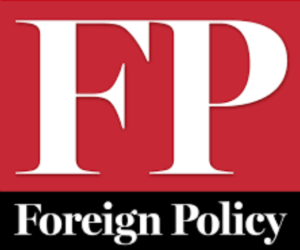The U.S. helped prevent war in 2008. Those days are gone.
A decade ago, the world watched in disbelief as terrorists from the Pakistan-based Lashkar-e-Taiba group ripped through the Indian financial capital of Mumbai. By the time the 10 attackers were stopped four days after the assault began, they had killed 164 people—Americans and other foreign nationals among them—and left over 300 injured. India’s 9/11, as the Indian media dubbed it, had unfolded. India, having long seen the Lashkar-e-Taiba as a direct proxy of the Pakistani intelligence outfit, the Inter-Services Intelligence, blamed the Pakistani state for having directed the attack. A near-war crisis between the two nuclear neighbors ensued in its wake, offering a stark reminder why U.S. President Bill Clinton termed this part of the world “the most dangerous place” on Earth at the turn of the century.
Ten years after the Mumbai attacks on November 26, 2008, the Indian-Pakistani rivalry remains as entrenched as ever. While the two countries have avoided major wars, they continue to flirt with crises and have been engaged in low-intensity conflict in the disputed territory of Kashmir. This has unfolded in an environment devoid of any robust crisis management mechanisms aimed at reducing the risk of inadvertent escalation and providing dependable ways of directly negotiating a way out of a crisis. With nuclear weapons in the mix, the consequences of escalation could be catastrophic—and the possibility of such an outcome is greater today than it was on the eve of the Mumbai attacks.
India and Pakistan came “fleetingly close” to war during the Mumbai crisis, but fortunate circumstances prevented a military clash. The attacks came on the back of the single most promising peace process the two have ever had. The overall aura of positivity and the trusted channels of communication created through their five-year peace bid helped relieve tensions. A dovish Indian prime minister, Manmohan Singh—who was genuinely interested in peace with Pakistan and hesitant to use military force to settle disputes, especially in South Asia’s nuclearized environment—also led India to forego the military option, even as the Indian public and media were calling for blood. Most importantly, third-party states, led by the United States, played crucial mediatory roles and were instrumental in nudging India and Pakistan to end the crisis.
This third-party role is often glossed over—partly because neither India nor Pakistan wants to acknowledge how heavily they tend to rely on outside actors in crisis moments despite being nuclear powers.
This third-party role is often glossed over—partly because neither India nor Pakistan wants to acknowledge how heavily they tend to rely on outside actors in crisis moments despite being nuclear powers.
And yet, the centrality of U.S. crisis management in nuclear South Asia has been not only consistent but also a vital substitute for the missing bilateral escalation control mechanisms between India and Pakistan. Washington was also critical to crisis termination in the previous major crises under the nuclear umbrella: a 1999 limited war in Kashmir and a 10-month military standoff in late 2001 and 2002. U.S. success in all these cases was dependent on its ability to use real-time intelligence to clarify misunderstandings between the two antagonists and to step in with a mixture of threats and concessions to force them to pull back at moments when war seemed inevitable.
None of the pacifying dynamics at play in the past necessarily hold today. The Mumbai attacks abruptly ended the peace process itself. Since then, bilateral tensions have remained high. Diplomatic dialogue between the two remains suspended. India’s nationalist government under Prime Minister Narendra Modi has made total cessation of cross-border militancy emanating from Pakistan a prerequisite for formal dialogue.
India and Pakistan have also failed to conclude any confidence-building measures on terrorism over the past decade. Prior arrangements, like the joint anti-terrorism mechanismthat was concluded in 2006, lie dormant. Attempts to collaborate on investigations of terrorist incidents, including of the Mumbai attacks, have failed, with both sides blaming the other. This puts India and Pakistan in a decidedly worse position to work together to thwart potential crisis triggers or to manage risks during crises than they were in on the eve of the Mumbai attacks.
At the same time, terrorism remains an ever-present danger. Even though no attacks on the scale of Mumbai have occurred since, Lashkar-e-Taiba and other anti-India terrorist outfits in the region remain active. Pakistan claims it lacks the capacity to neutralize these groups, arguing that it has had to channel all its counterterrorism focus and resources to fighting the existential threat posed to it by the Pakistani Taliban and other domestically focused groups. However, India alleges continued active Pakistani support for militants and frames their periodic strikes on Indian soil as directed by the Pakistani state. Indian leaders therefore feel justified in directly punishing the Pakistani state for the anti-India terrorism perpetrated by these groups.
Other transnational terrorist outfits, such as the Islamic State and al Qaeda, have also expanded their footprint in the region, further complicating the threat spectrum for both countries. These groups are sworn enemies of both states, and their goal of destabilizing the region would be well served by thrusting the two nuclear neighbors into war. Hindu extremist forces in India could also spark a crisis. These forces, increasingly emboldened within India under Modi, have previously targeted Pakistani citizens in a bid to derail India-Pakistan relations. Pakistan has been increasingly vocal and aggressive in alleging Indian support of terrorist incidents in Pakistan.
Terrorism isn’t the only worry. The “Line of Control” that divides Indian and Pakistani control of Kashmir is also a likely flashpoint. Violence levels along the Line of Control were the highest in 15 years in 2017, with violations of a cease-fire agreed to in 2003 consisting of prolonged and often significant military hostilities.

No comments:
Post a Comment